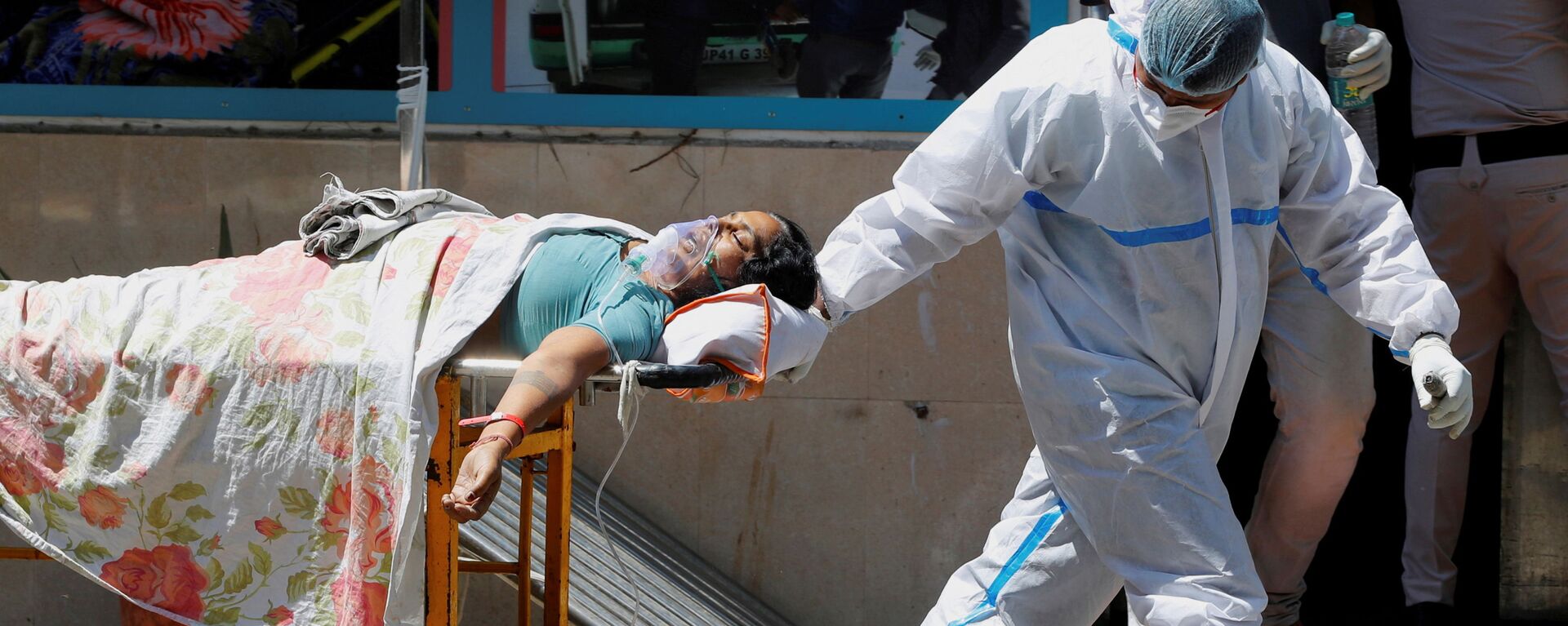A 13-year-old patient in Karnataka's Davangere district has been diagnosed with Acute Necrotising Encephalopathy of Childhood (ANEC), a rare post-COVID-19 complication that affects the brain. This is India's second ANEC case, the first having been reported in the All Indian Institute of Medical Sciences (AIIMS) in Delhi.
"Acute necrotising encephalopathy is an immune-mediated disease which is usually seen after infection with mycoplasma, influenza A and the herpes simplex virus. However, it has recently been seen in post-COVID-19 patients. It is seen in children rarely. Coronavirus binds to [Angiotensin-converting enzyme 2] ACE2 receptors which are abundant in glial cells and arterial smooth cells in the brain, that is why neurological manifestations are seen in COVID-19 and also post-COVID complications. The mechanism of entry to the Central Nervous System (CNS) would be a cribriform plate of ethmoid bone or hematogenous dissemination," Dr Bharath Kumar Surisetti, a consultant neurologist at the Yashoda Hospitals in Hyderabad, Telangana state, told Sputnik.
Dr Surisetti said that since both ANEC and MIS-C are immune-mediated and are caused by post-COVID-19 complications, they tend to be similar. "In children, ANEC presents with focal seizure, hemiparesis, irritability, and fluctuating consciousness. MIS-C can also present with seizures, irritability and intolerance to feeds and shortness of breath, and hypotension. However MRI findings in ANEC are T2 flair hyperintensities in basal ganglia, internal capsule, thalamus, cerebellum and rarely in occipital and parietal lobes," the doctor said.
Dr Surisetti also warned that there is a possibility there will be a lot more cases of ANEC. "We are already seeing multiple cases of MIS-C in the pediatric population," he added.
ANEC is a rare complication of influenza and other viral infections and has been related to Intracranial Cytokine Storms, which results in a blood-brain barrier breakdown but without direct viral invasion or Parainfectious Demyelination. Though it is rare, it affects children more than adults.
"COVID-19 triggers an inflammatory fighting response by the body and produces specific chemicals or cytokines that can affect many organs including the brain. The manifestations of this vary in presentation and ANEC is one of them," Dr Sujatha Thyagarajan, a senior consultant in paediatric intensive care at Aster RV Hospital in Bangalore, Karnataka state, told Sputnik.
Some doctors have stressed that there is no scientific data to explain why such rare conditions develop as post-COVID-19 complications and it is hard to predict whether these instances will increase if a third wave of coronavirus pandemic occurs.
"The virus is mutating, therefore anything can happen in the third wave. But we don't have any scientific evidence to believe that such conditions will be witnessed in the third wave," Dr Jesal Sheth, a senior consultant paediatrician at Fortis Hospital in Mulund, a suburb of Mumbai, told Sputnik.
Multisystem Inflammatory Syndrome (MIS-C) is another condition that is being reported as a post-COVID complication in children. "MISC is the condition secondary to COVID seen between two and eight weeks after acute COVID-19 infection. Children tend to have a high degree of inflammation or fighting response and such a release of chemicals or cytokines affects various organs. If there is an involvement of the neuro region then ANEC is one of the conditions. We are now managing a case of Hemiconvulsion Hemiplegia Epilepsy Syndrome (HHES) not reported yet in literature," Dr Thyagarajan said.
She also mentioned that various forms and effects of COVID-19 infection are being seen: "We are understanding the spectrum of illness with every new case and it is likely that we will observe such cases more and more."
The doctors warned that ANEC is a life-threatening condition and there is a need for immediate ICU admission, an MRI to find abnormalities in the brain, EEG to look for subclinical seizures, and CSF analysis to rule out CNS infection. It can be treated by IVIG 4 gram per day for five days and other clinical means. The treatment is also very costly as each injection costs between $1000 and $1300. Most cases of ANEC have been reported from south-east Asia. Though experts say that the chances of recovery from this condition are low, there have been cases of it.







